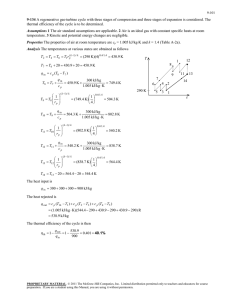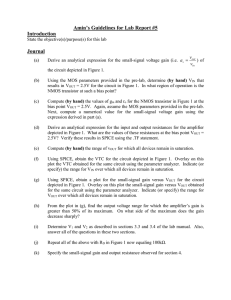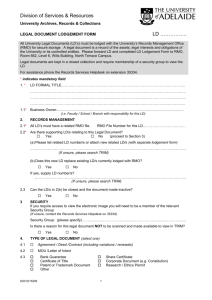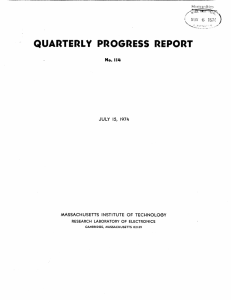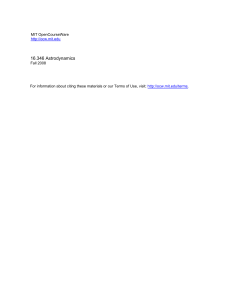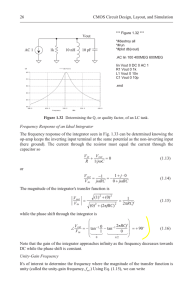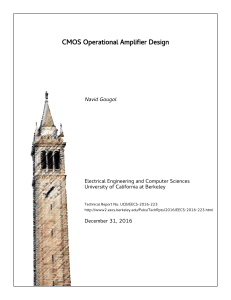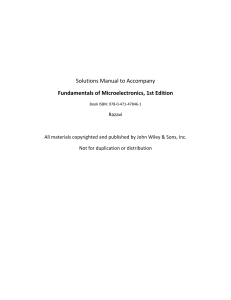1 Derivation of the Gain of a Cascode Stage
advertisement
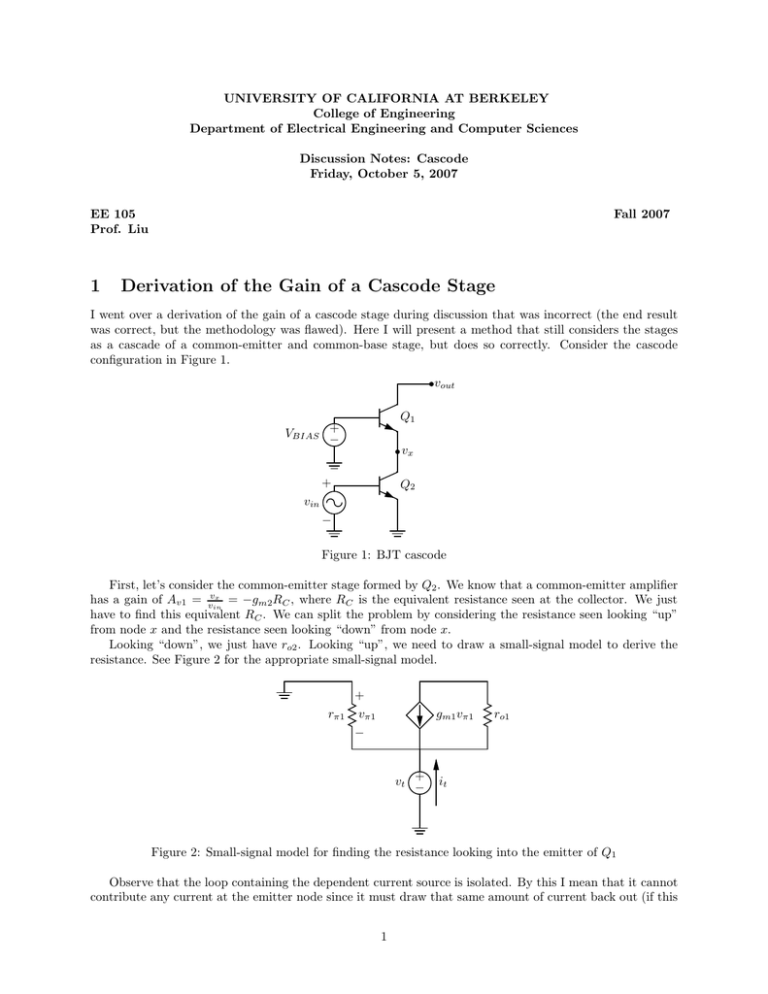
UNIVERSITY OF CALIFORNIA AT BERKELEY College of Engineering Department of Electrical Engineering and Computer Sciences Discussion Notes: Cascode Friday, October 5, 2007 EE 105 Prof. Liu 1 Fall 2007 Derivation of the Gain of a Cascode Stage I went over a derivation of the gain of a cascode stage during discussion that was incorrect (the end result was correct, but the methodology was flawed). Here I will present a method that still considers the stages as a cascade of a common-emitter and common-base stage, but does so correctly. Consider the cascode configuration in Figure 1. vout VBIAS Q1 + − vx + Q2 vin − Figure 1: BJT cascode First, let’s consider the common-emitter stage formed by Q2 . We know that a common-emitter amplifier x has a gain of Av1 = vvin = −gm2 RC , where RC is the equivalent resistance seen at the collector. We just have to find this equivalent RC . We can split the problem by considering the resistance seen looking “up” from node x and the resistance seen looking “down” from node x. Looking “down”, we just have ro2 . Looking “up”, we need to draw a small-signal model to derive the resistance. See Figure 2 for the appropriate small-signal model. rπ1 + vπ1 gm1 vπ1 ro1 − vt + − it Figure 2: Small-signal model for finding the resistance looking into the emitter of Q1 Observe that the loop containing the dependent current source is isolated. By this I mean that it cannot contribute any current at the emitter node since it must draw that same amount of current back out (if this 1 isn’t clear, write KCL at the emitter and you’ll observe the current source cancelling itself out). This just leaves the test source and the resistor rπ1 to ground, meaning the equivalent resistance looking “up” from node x is just rπ1 . Thus, we have the gain for the first stage: Av1 = vx = −gm2 (rπ1 k ro2 ) vin Now let’s take a look at the second stage. We need to compute Av2 = vvout for this common-base stage. x The small-signal model is shown in Figure 3. First, let’s write a KCL equation at the output. vout + rπ1 gm1 vπ1 vπ1 − ro1 + vx − Figure 3: Small-signal model for finding the gain of the common-base stage of the cascode gm1 vπ1 + vout − vx =0 ro1 Noting that vπ1 = −vx , we can rewrite this KCL equation and solve for vout /vx as follows: vout − vx −gm1 vx + =0 ro1 vout 1 = vx gm1 + ro1 ro1 vout Av2 = = 1 + gm1 ro1 vx Now we can find Av = vout /vin = Av1 Av2 as follows: Av = −gm2 (rπ1 k ro2 ) (1 + gm1 ro1 ) ≈ −gm1 gm2 ro1 (ro2 k rπ1 ) This is the same expression as derived in lecture, as expected. 2
